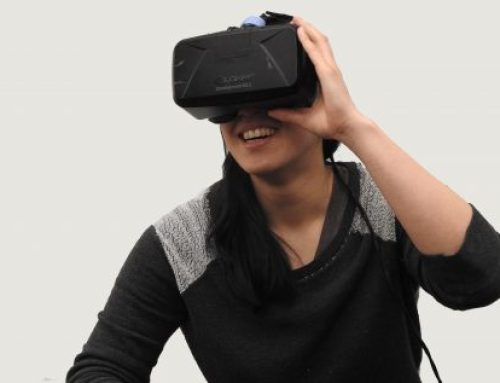How virtual reality can help in the treatment of Parkinson’s patients.
Virtual Reality (VR) technology has become increasingly established in many areas of technology, including rehabilitation in the healthcare sector. There is extensive research to investigate the effects of VR on Parkinson’s disease (PD). PD is a neurodegenerative disease that is traditionally controlled by a combination of medication and physical therapy. With the increasing popularity of VR, the technology has the potential to improve treatment outcomes.

Virtual Reality zur Rehabilitation von Gang und Balance bei Parkinson-Patienten.
With the emergence and recent popularity of this innovative technology, VR has been proposed as a possible rehabilitation tool in combination with traditional physiotherapeutic approaches. A recent report has shown that a sense of control, success and an appropriate level of challenge are key factors that explain a patient’s immersion and enjoyment of VR systems. VR systems optimize motor learning in a safe environment and can help to improve the activities of daily life by recreating real-life scenarios.
Within VR, the enhanced feedback on a PD patient’s performance enables the repeated performance of motor tasks and thus stimulates both motor and cognitive processes simultaneously. VR offers patients with neurological deficits, such as PD, the opportunity to develop new motor strategies or to relearn motor skills that have been lost due to their injuries or disease processes. For example, a PD patient with akinesia has difficulty initiating a step, but can step over an object that appears in their path. In addition, other VR technologies focus on improving broader symptoms of PD, such as the ability to increase stride length and improve balance in safe, controlled environments. In comparison to traditional physiotherapy, experiments investigating the effectiveness of VR in improving walking and balance outcomes, namely the Six-Minute Walk Test and the Berg Balance Scale, have shown that VR-based training has led to moderate improvements in step length and stride length in PD patients.
The Nintendo Wii and Xbox Kinect were used as VR tools to treat PD symptoms. The reason for using VR systems is to provide advanced visual and audio feedback to gradually challenge postural control and balance during a task. One area where VR training can be particularly effective for PD patients is fall prevention in the event of poor input from visual and somatosensory systems. A possible explanation for this lies in the conditions under which VR training takes place. Where the visual and somatosensory system is altered and unreliable, forcing the patient to rely on the use of a vestibular system for compensation.
Scientific reasons and advantages for the use of virtual reality.
- Improvement of motivation/repeating: To learn a motor skill, patients need sufficient motivation to advance their repetitive practice of a cranium. VR can be a novel technology for most people, and with the variations in environment and task that are possible with simulated virtual environments, patients are less prone to boredom. Patients can tolerate the long exercise time due to the variety of video games.
- Precise feedback: There is extensive evidence that proprioceptive and exteroceptive feedback can induce profound cortical and subcortical changes associated with motor performance. With the use of VR, the feedback is supplemented by various settings. This can individually adapt and further improve the physiological changes in patients with PD.
- Transferability: It can be feared that the motor skills learned by VR cannot be transferred to real environments. However, there is a lot of evidence that patients are not only able to learn motor skills but also to put them into practice.
- Early learning: Patients with severe Parkinson’s disease may have difficulty learning a new motor skill, especially when it comes to the performance of complex motor skills. With VR, patients can benefit from simplifying the task to their core competencies. In contrast, in a real environment there are many distractions that can occur and slow down learning as patients try to distinguish the most important aspects of the task.
Limitations of VR in Parkinson’s disease.
VR technology has some limitations for patients with PD. These include the possibility of congenital overload, cyber illness or inappropriate content of the exercises used for the rehabilitation of PD.
In addition, home VR systems used for rehabilitation can be detrimental to performance, as patients can increase game performance by compensatory movements. Patients can begin to prioritize scores based on their movement quality, which reduces the training effects. Future home-based VR systems for neurological rehabilitation should ensure that compensatory movements cannot be used to improve game performance.
It remains unclear how VR systems can be adapted to the specific needs of PD populations. Commercial VR systems for people with neurological disorders are not yet developed. Current systems designed for the general healthy population, such as the Xbox Kinect and Nintendo Wii, may compromise the effectiveness of such interventions and the safety of these populations.
However, VR and physiotherapeutic measures have similar effects on gait, balance and quality of life. In a recent systematic review in 2016, it was concluded that there is limited evidence that VR can serve as a useful alternative to traditional physiotherapy to improve gait and balance in patients with PD.
Future research in VR for Parkinson’s disease.
VR is still a relatively young technology, Few studies have been conducted, making generalisations for populations outside the research environment difficult, Further research is needed to expand the evidence for the use of VR in PD populations. Future research should aim to investigate the effectiveness of VR interventions in different disease stages of PD to determine the benefit of VR-based interventions in preventing physical decline in the early stages of PD and during the progression of PD in the mid- to late-stage. In addition, it should also focus on providing evidence-based recommendations on the frequency, duration and content of VR interventions for PD populations.
Thank you very much for your visit.


